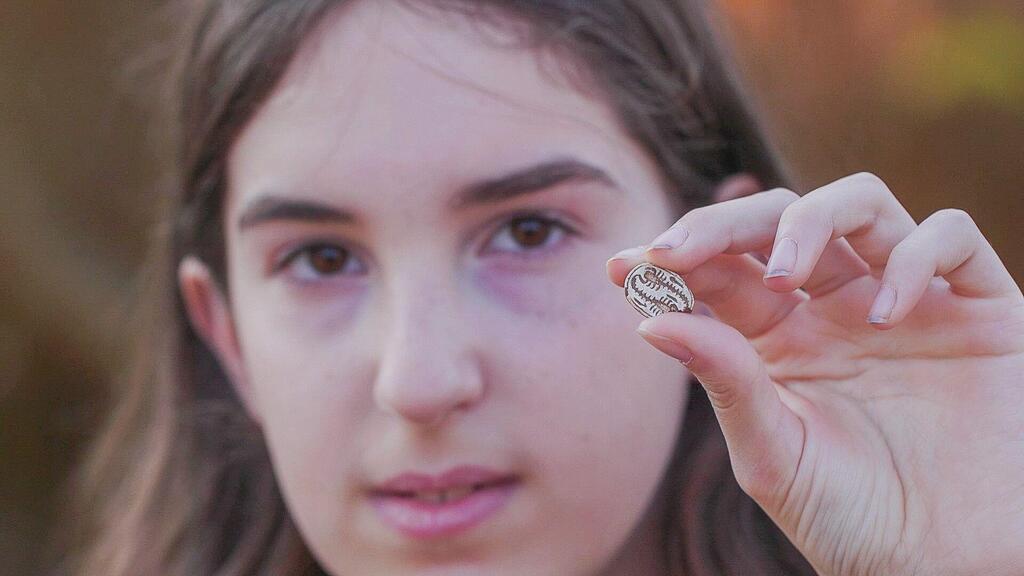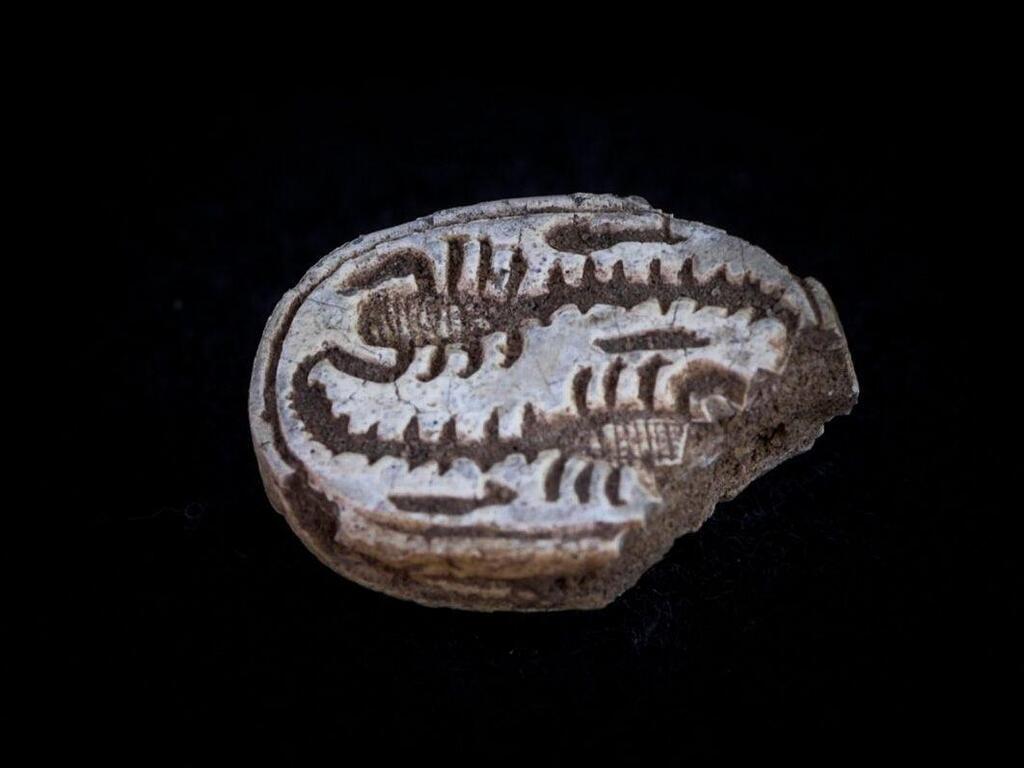Getting your Trinity Audio player ready...
Dafna Filshteiner, 12, made an extraordinary discovery at the Nahal Kana archaeological site in Hod Hasharon: a 3,500-year-old Egyptian scarab amulet.
"I was looking down at the ground to find porcupine needles and smooth pebbles,” she said. “And suddenly I picked up an interesting stone. I showed it to my mother, and she said it was just an ordinary stone or a bead. But then I saw a decoration and stubbornly insisted it was more than that, so we searched on the Internet. There, we identified more photos of stones similar to what we had found. We realized that it was something special and immediately called the Antiquities Authority."
(Video: Israel Antiquities Authority)
The family reached out to Mor Wiesel, an archaeologist with the Antiquities Authority, who thanked Dafna and her family for their prompt communication. Dafna was awarded a certificate of excellence for her good citizenship, and the scarab was transferred to the National Treasures collection at the Jay and Jeanie Schottenstein National Campus for the Archaeology of Israel.
Dr. Yitzhak Paz, a Bronze Age specialist at the Antiquities Authority, examined the artifact and dated it to the New Kingdom period of Egypt, approximately 3,500 years ago. The scarab features two scorpions arranged head-to-tail. According to Dr. Paz, "The scorpion symbol represented the Egyptian goddess Serket, who was considered responsible, among other things, for protecting pregnant mothers. Another decoration on the amulet is the nefer symbol, which in Egyptian means ‘good’ or ‘chosen’. There is also another symbol which looks like a royal staff."
The Antiquities Authority explained that scarabs were amulets shaped like dung beetles, which the ancient Egyptians revered as sacred. The beetles symbolized new life due to their practice of rolling dung balls, in which they laid their eggs, leading to the emergence of new life. The term "scarab" derives from the Egyptian verb meaning "to come into being" or "to be created," as the dung beetle was seen as a manifestation of the creator god.
Scarabs found in Israel, often used as seals, serve as evidence of Egyptian governance in the region 3,500 years ago and the cultural influence Egypt exerted over the area. "The scarab is indeed a distinct Egyptian characteristic, but their wide distribution also reached far beyond Egypt’s borders. It may have been dropped by an important and authoritative figure passing through the area, or it may have been deliberately buried. Since the find was discovered on the surface, it is difficult to know its exact context," Dr. Paz noted.
Get the Ynetnews app on your smartphone: Google Play: https://bit.ly/4eJ37pE | Apple App Store: https://bit.ly/3ZL7iNv
Tel Qana, the site near where the scarab was discovered, holds significant archaeological value. Dr. Amit Dagan from Bar-Ilan University’s Martin (Sus) Department of Land of Israel Studies and Archaeology and Dr. Ayelet Dayan from the Antiquities Authority, who are leading excavations at the site, stated, "This find is both exciting and significant. The scarab and its unique pictorial features, along with other finds discovered at Tel Qana with similar motifs, provide new insights into the nature of the Egyptian influence in the region in general, and the Yarkon area in particular."
Eli Escusido, director of the Israel Antiquities Authority, commended Dafna for her discovery and the responsible action she took in reporting it. "Dafna received a certificate of appreciation from the Israel Antiquities Authority, and now the scarab she found is on display in Jerusalem at the Jay and Jeanie Schottenstein National Campus for the Archaeology of Israel, so the entire public can enjoy it. Everyone is welcome to come and visit!"







